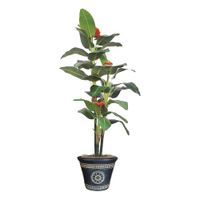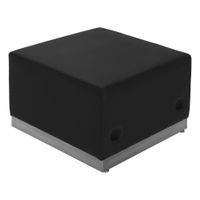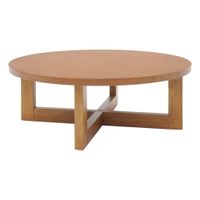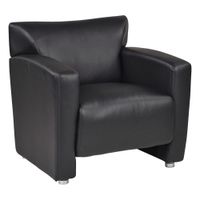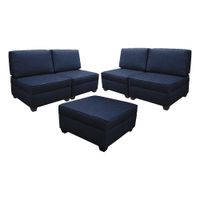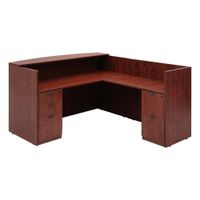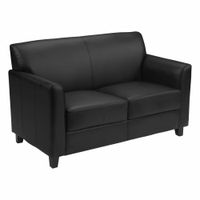Call +(254) 703 030 000 / 751 483 999 / 721 704 777
- Home
- Furnishings Appliances Hospitality
- Furniture
- Reception Lounge Furniture
Frequently Asked Questions
What is the best type of reception furniture for a small waiting room?
The best type of reception furniture for a small waiting room should maximize space efficiency, comfort, and aesthetics. Opt for modular seating arrangements like loveseats or compact sofas that can be easily rearranged to accommodate different numbers of visitors. Choose furniture with clean lines and minimalistic designs to avoid overwhelming the space.
Consider multi-functional pieces, such as benches with built-in storage, to keep the area tidy and organized. Stackable or foldable chairs can be useful for flexibility, allowing you to adjust the seating capacity as needed.
Select furniture with lighter colors or materials to create an illusion of a larger space. Materials like leather or high-quality fabric are durable and easy to clean, which is essential for high-traffic areas.
Incorporate small side tables or nesting tables to provide surfaces for visitors to place their belongings without taking up too much room. Wall-mounted shelves or magazine racks can help keep reading materials accessible without cluttering the floor space.
Ergonomics should not be overlooked; ensure that seating is comfortable and supportive to enhance the visitor experience.
Finally, add a few decorative elements like plants or artwork to create a welcoming atmosphere without overcrowding the space.
How do I choose the right reception desk for my office?
1. **Assess Space and Layout**: Measure the available space in your reception area. Consider the flow of traffic and ensure the desk doesn't obstruct movement. Choose a size that fits comfortably within the space.
2. **Consider Functionality**: Determine the primary functions of the reception desk. Will it be used for greeting guests, handling mail, or managing appointments? Ensure it has adequate storage, cable management, and workspace for these tasks.
3. **Match Office Aesthetics**: The reception desk should complement your office's design and branding. Choose materials, colors, and styles that align with your office decor to create a cohesive look.
4. **Prioritize Ergonomics**: Ensure the desk is comfortable for the receptionist. It should have an appropriate height, ample legroom, and space for necessary equipment like computers and phones.
5. **Evaluate Durability and Maintenance**: Select materials that are durable and easy to maintain. High-traffic areas require robust materials that can withstand wear and tear.
6. **Consider Privacy Needs**: Depending on the nature of your business, you may need a desk that offers privacy for sensitive tasks. Look for designs with partitions or higher panels if necessary.
7. **Budget Considerations**: Set a budget before shopping. While it's important to invest in quality, there are options available at various price points. Balance cost with the features and durability you need.
8. **Future-Proofing**: Consider future needs. Choose a design that can accommodate potential growth or changes in office layout.
9. **Seek Professional Advice**: If unsure, consult with an interior designer or office planner to ensure the desk meets all functional and aesthetic requirements.
What are the benefits of modular reception furniture?
Modular reception furniture offers several benefits that enhance both functionality and aesthetics in a reception area.
1. **Flexibility and Adaptability**: Modular furniture can be easily reconfigured to suit different spaces and needs. This adaptability allows businesses to modify their reception area layout without the need for new furniture, accommodating changes in staff numbers or office design.
2. **Space Optimization**: These pieces are designed to fit together in various configurations, making it easier to maximize the use of available space. This is particularly beneficial in smaller reception areas where efficient use of space is crucial.
3. **Cost-Effectiveness**: Investing in modular furniture can be more economical in the long run. As needs change, additional pieces can be purchased to expand the existing setup, eliminating the need for a complete overhaul.
4. **Aesthetic Appeal**: Modular furniture often comes in a variety of styles, colors, and materials, allowing businesses to create a cohesive and professional look that aligns with their brand image.
5. **Ease of Maintenance and Replacement**: Individual modules can be replaced or repaired without affecting the entire setup, making maintenance more manageable and less costly.
6. **Enhanced Functionality**: Many modular systems offer integrated features such as power outlets, USB ports, and storage solutions, enhancing the functionality of the reception area for both staff and visitors.
7. **Sustainability**: Modular furniture is often designed with sustainability in mind, using eco-friendly materials and manufacturing processes. Its longevity and adaptability also contribute to reduced waste.
8. **Improved Visitor Experience**: A well-designed modular reception area can create a welcoming and comfortable environment for visitors, reflecting positively on the organization.
Overall, modular reception furniture provides a versatile, efficient, and stylish solution for modern reception areas, meeting the dynamic needs of businesses today.
How can I make my waiting room more comfortable for guests?
To make your waiting room more comfortable for guests, focus on several key elements:
1. **Seating**: Provide a variety of seating options, including chairs with armrests, sofas, and benches. Ensure they are comfortable, clean, and well-maintained. Arrange seating to allow for both privacy and social interaction.
2. **Ambiance**: Use calming colors like blues, greens, or neutrals on walls and decor. Incorporate soft lighting with adjustable lamps or dimmable overhead lights to create a soothing atmosphere.
3. **Temperature and Air Quality**: Maintain a comfortable temperature and ensure good ventilation. Consider air purifiers to improve air quality and reduce allergens.
4. **Entertainment and Information**: Offer a selection of current magazines, newspapers, and books. Provide a TV with closed captions or a digital display with relevant information. Free Wi-Fi access is also appreciated.
5. **Refreshments**: Provide complimentary water, coffee, or tea. Consider offering healthy snacks like fruit or granola bars.
6. **Cleanliness**: Keep the waiting area clean and tidy. Regularly sanitize surfaces and ensure trash bins are emptied frequently.
7. **Accessibility**: Ensure the space is accessible to all guests, including those with disabilities. Provide clear signage and consider the needs of parents with children, such as a play area or changing station.
8. **Decor**: Add plants or artwork to create a welcoming environment. Choose decor that reflects your brand or the purpose of your business.
9. **Personal Touches**: Consider adding a personal touch, such as a welcome message or a display of local art or community events.
By focusing on these elements, you can create a waiting room that is both comfortable and inviting for your guests.
What materials are best for durable waiting room furniture?
For durable waiting room furniture, materials should be chosen based on their ability to withstand heavy use, ease of maintenance, and aesthetic appeal. Here are some of the best materials:
1. **Metal**: Steel and aluminum are excellent for frames due to their strength and resistance to wear and tear. They are also easy to clean and maintain, making them ideal for high-traffic areas.
2. **Wood**: Hardwoods like oak, maple, and cherry are durable and offer a classic look. They can be treated with finishes to enhance their resistance to scratches and stains. Engineered wood with a veneer finish can also be a cost-effective alternative.
3. **Plastic**: High-density polyethylene (HDPE) and polypropylene are robust, lightweight, and resistant to moisture and stains. They are available in various colors and designs, making them versatile for different decor styles.
4. **Upholstery**: For upholstered furniture, materials like vinyl and leather are preferred. Vinyl is durable, easy to clean, and available in many colors and textures. Leather offers a luxurious feel and is long-lasting if properly maintained. For fabric upholstery, consider performance fabrics that are stain-resistant and easy to clean.
5. **Laminate**: For tables and surfaces, laminate is a practical choice. It is resistant to scratches, stains, and heat, and is available in numerous finishes that mimic wood or stone.
6. **Glass**: Tempered glass can be used for tabletops. It is strong, scratch-resistant, and adds a modern touch to the decor. However, it requires regular cleaning to maintain its appearance.
Choosing the right combination of these materials can ensure that waiting room furniture is both durable and aesthetically pleasing, providing comfort and longevity in high-traffic environments.
How do I arrange furniture in a waiting room for optimal flow?
To arrange furniture in a waiting room for optimal flow, consider the following steps:
1. **Assess Space and Functionality**: Measure the room dimensions and identify entry and exit points. Determine the primary function, such as seating capacity and accessibility.
2. **Create Zones**: Divide the room into zones for seating, reception, and any additional features like a coffee station or reading area. This helps in organizing the space efficiently.
3. **Seating Arrangement**: Use a mix of seating options like chairs, sofas, and benches. Arrange them in clusters to encourage conversation while maintaining personal space. Ensure there is enough space between seats for easy movement.
4. **Traffic Flow**: Design pathways that allow easy movement to and from the entrance, reception, and seating areas. Avoid placing furniture in direct paths to prevent congestion.
5. **Reception Area**: Position the reception desk near the entrance for easy access. Ensure it is visible and approachable without obstructing traffic flow.
6. **Accessibility**: Ensure compliance with ADA guidelines by providing clear pathways and accessible seating options for individuals with disabilities.
7. **Lighting and Ambiance**: Use natural and artificial lighting to create a welcoming atmosphere. Position lamps and overhead lights to avoid glare and shadows.
8. **Decor and Accessories**: Add plants, artwork, and magazines to enhance the environment. Ensure these elements do not obstruct movement or visibility.
9. **Flexibility**: Choose modular furniture that can be easily rearranged to accommodate different needs or events.
10. **Safety and Maintenance**: Ensure all furniture is stable and easy to clean. Avoid sharp edges and ensure materials are durable.
By considering these elements, you can create a waiting room that is both functional and inviting, ensuring optimal flow and comfort for visitors.
What are the latest trends in reception area design?
The latest trends in reception area design focus on creating welcoming, functional, and aesthetically pleasing spaces that reflect a company's brand and values. Key trends include:
1. **Biophilic Design**: Incorporating natural elements like plants, natural light, and organic materials to create a calming environment that promotes well-being.
2. **Sustainability**: Using eco-friendly materials and energy-efficient lighting to reduce environmental impact and appeal to eco-conscious clients and employees.
3. **Technology Integration**: Implementing digital check-in kiosks, interactive displays, and smart lighting to enhance visitor experience and streamline operations.
4. **Flexible Layouts**: Designing adaptable spaces with modular furniture that can be easily reconfigured for different functions or events.
5. **Comfort and Hospitality**: Creating a lounge-like atmosphere with comfortable seating, refreshments, and amenities to make visitors feel at home.
6. **Brand Expression**: Using design elements like color schemes, logos, and artwork to convey the company’s identity and values.
7. **Minimalism**: Emphasizing clean lines, uncluttered spaces, and simple decor to create a modern and sophisticated look.
8. **Acoustic Solutions**: Incorporating sound-absorbing materials and design features to reduce noise and enhance privacy.
9. **Art and Culture**: Displaying local art or cultural elements to add character and engage visitors.
10. **Inclusive Design**: Ensuring accessibility for all visitors, including those with disabilities, by adhering to universal design principles.
These trends aim to create a positive first impression, enhance user experience, and support the overall functionality of the reception area.
